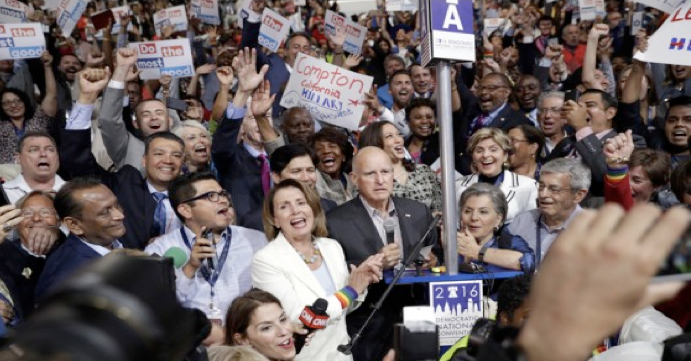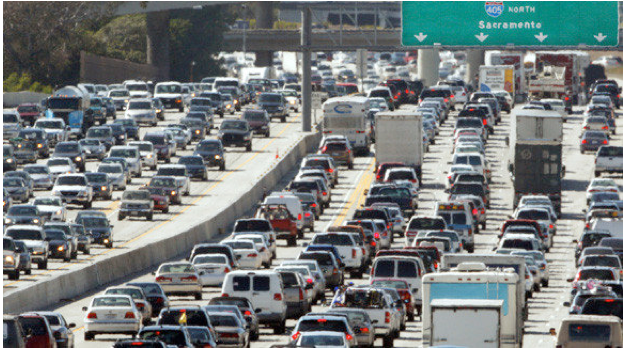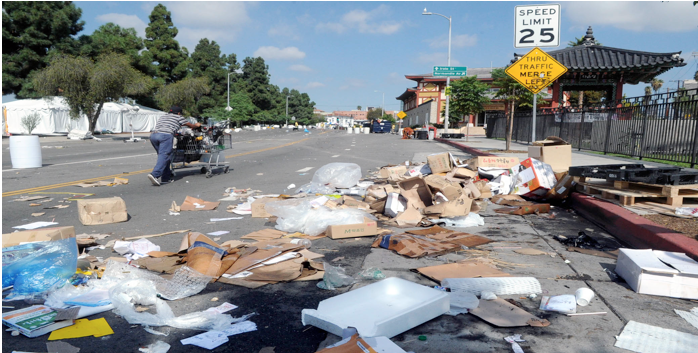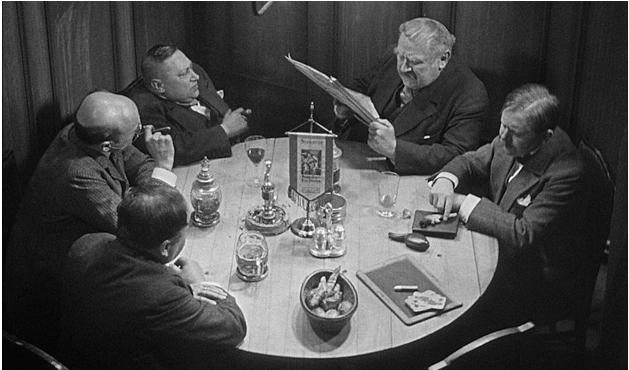Neither Funding Nor Consensus Are Lacking In LA Region's Effort to Create a Modern Rail Transit System
ALPERN TALKS TRANSIT--There is no reason to choose between more options for mobility and commuting. Improved roads, freeways, rail systems, bus routes, etc. need not be created at the expense of the others--it's like choosing food versus water. Similarly, it's pointless and immature to choose between transportation infrastructure and planning infrastructure--without one, the other falls apart.
Similarly, local versus regional versus federal help for our roads and freeways and rail systems need not be independent of the other. Those who want more high-speed rail and yet give the cold shoulder (or even a more pejorative expression) to highway construction/upgrades are not part of the answer, they're part of the problem--and, of course, vice versa.
On the Eastside of LA County, and in the Southeast Cities of LA County, that region benefits from both an I-5 widening and I-605 upgrade as well as with new Metro Rail lines planned to link into the current Gold and Green lines.
And it sure wouldn't hurt to have a double-barreled approach to the South Bay Cities of L.A. County, in that a new Major Investment Study to extend and expedite the South Bay Green Line to Torrance, San Pedro and the Long Beach Blue Line is as timely as any potential freeway enhancements to the I-405 South Bay curve.
And if some of us who foam at the mouth at any discussion of new freeways would just "take a chill pill", here's another reasonable question: would a freeway to connect LAX to the I-10 freeway via the La Cienega corridor, or an upgrade/expansion of the Downtown I-10, be any less desired by commuters than a direct LAX-Downtown train without the Crenshaw and Expo Line detour?
So let's talk about regional rail efforts that might APPEAR local, but yet enjoy regional planning and consensus, and (no thanks to Sacramento) are getting regional and federal support.
Regional Rail Example #1: The Wilshire Subway
One of the best nominees of the outgoing presidential administration is one Anthony Foxx, the U.S. Transportation Secretary (photo above) who was unanimously nominated by the Senate and who is an advocate for both automobile and transit funding, and is a powerful advocate for both public and private funding for New Starts in transportation.
Secretary Foxx was present for a ceremonial signing of $1.6 billion in federal funding to extend the Metro Purple Line (a.k.a. "the Wilshire Subway") to Century City. This Wilshire Subway/Purple Line is used by commuters all over the county and Southern California region to access their jobs, and is already undergoing extension to La Cienega.
The La Cienega extension is phase one of the Purple Line westward push to the 405 freeway, and the Century City extension is phase two. Measure R, the half-cent sales tax approved by LA County voters in 2008, is already dedicating $747 million for this second phase.
The whopping $1.6 billion for the second phase allows all sorts of projects (including the third phase of the Wilshire Subway/Purple Line to the West LA Veterans Center) to be moved up the planning ladder at Metro as money becomes available for these other projects as a result of the federal grant.
And although Sacramento has been dedicating by far too much money away from this locally-preferred project, the Purple Line continues to draw bipartisan support both from Washington and throughout LA County. Let's hope that another grant is forthcoming for the third phase of the Purple Line.
Regional Rail Example #2
There are three main gaps of the Green Line--the first light rail line that didn't have a direct connection to Downtown, and which helps connect the peripheral regions of LA County to each other--to LAX, to the South Bay Cities, and to Norwalk.
In that order, the attention, focus, and priority of both planners and budget directors at Metro exists to correct these "Green Gaps". Of note is that--when the old Friends of the Green Line project did their outreach fifteen years ago--the local consensus was also in that same order.
First, LAX. Second, the South Bay Cities to Redondo Beach and Torrance. And third, gone but not forgotten, is Norwalk.
There is a major Metrolink train station at Norwalk that serves commuters from Orange and Riverside counties, and years ago an eastern Green Line extension was planned to connect this 2.8 mile gap between Metro Rail and Metrolink.
It's no secret that when major connections and destinations are reached via train (or even bus) transit routes, ridership explodes incrementally. That happened when the Red Line Subway connected to Universal City and North Hollywood, and when the Expo Line connected to the Westside.
So it's long overdue that this "Green Gap" connecting LA, Orange and Riverside counties be revisited. The locals in Norwalk and Santa Fe Springs did not show us a lot of love at all fifteen years, ago, but at least the interest has returned in a new generation of mobility-minded experts.
And it's not just the locals who are interested. Mayor Garcetti, Metro, and the Southern California Association of Governments (SCAG) are also taking note that this critical connection be ignored no longer.
As predicted by Friends of the Green Line, the connection of the Green Line to LAX would suddenly turn NIMBY's into YIMBY's for Green Line expansion. Both LAX workers and commuters would love to park or be dropped off a long way from LAX to access that destination, or even to access the entirety of the expanding Metro Rail network.
Who would pay for this project, which could easily reach up to $600 million or more if it were placed underground or were elevated?
Arguably, despite its entire location in LA County, the project was proposed for Orange and Riverside County funding in the past, and the same should hold true in the future. L.A. County cannot reasonably fund and build all of its projects that benefit non-LA County residents and commuters.
But at least the overdue project is being re-explored...and this time, hopefully pursued by a multicounty agency that will be unstoppable in its attempts to plan, fund, and build it. The next community open house (and the last for now) is at 12239 Sproul Street in Norwalk this Wednesday, January 11th from 6-8 pm.
And for those of you who want our freeways and planning/zoning upgraded for the 21st Century as well as a rail upgrade...don't stop fighting and demanding for those as well.
Because transportation of all modes and locations has never been a "mutually exclusive" sort of issue. That's only for the short-sighted and petty, and we've no time nor patience for that in traffic-clogged Southern California.
(Kenneth S. Alpern, M.D. is a dermatologist who has served in clinics in Los Angeles, Orange, and Riverside Counties. He is also a Westside Village Zone Director and Board member of the Mar Vista Community Council (MVCC), previously co-chaired its Planning and Outreach Committees, and currently is Co-Chair of its MVCC Transportation/Infrastructure Committee. He is co-chair of the CD11Transportation Advisory Committee and chairs the nonprofit Transit Coalition, and can be reached at [email protected]. He also co-chairs the grassroots Friends of the Green Line at www.fogl.us. The views expressed in this article are solely those of Dr. Alpern.)
-cw

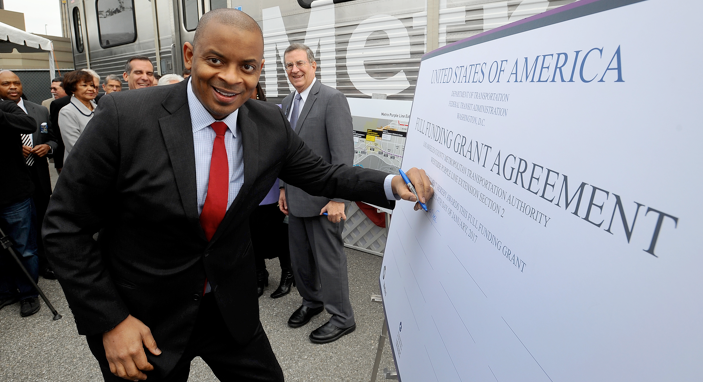


 Caney Arnold has thrown his hat in the City Council race in District 15 to turn this around. Arnold, who has a background in Air Force acquisition and program management, is fed up with what he’s witnessed in the Council. Grassroots democracy, government transparency and accountability are the cornerstones of his campaign. I sat down with Arnold to discuss why he decided to run and the details of his platform.
Caney Arnold has thrown his hat in the City Council race in District 15 to turn this around. Arnold, who has a background in Air Force acquisition and program management, is fed up with what he’s witnessed in the Council. Grassroots democracy, government transparency and accountability are the cornerstones of his campaign. I sat down with Arnold to discuss why he decided to run and the details of his platform. 
 In order to stop these evictions, I took a number of steps. First, I sent a letter to the General Manager of the Planning Department calling for a hearing regarding Watermark Retirement Communities’ proposal to renovate the facility and to change its use from residential to commercial. I also launched a pressure campaign on Facebook listing the names of each of the executives behind this unfortunate decision as well as phone numbers, email addresses, and mailing addresses, calling on outraged community members to demand they halt the evictions.
In order to stop these evictions, I took a number of steps. First, I sent a letter to the General Manager of the Planning Department calling for a hearing regarding Watermark Retirement Communities’ proposal to renovate the facility and to change its use from residential to commercial. I also launched a pressure campaign on Facebook listing the names of each of the executives behind this unfortunate decision as well as phone numbers, email addresses, and mailing addresses, calling on outraged community members to demand they halt the evictions. 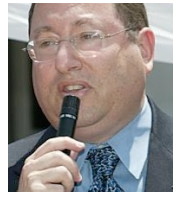 Although we are making forward progress, our work is not yet done. The huge issue remaining is that Watermark has argued that they must renovate the building for life-safety reasons, and that it can’t be done without removing all the tenants during that period. Watermark appears to have a point that this over 50-year-old building needs renovation for safety purposes. I have a meeting scheduled this week with Watermark’s management, architects and engineers, experts from the City’s Department of Building and Safety, and possibly additional specialists brought in by the residents’ attorneys, in order to determine whether renovating this building can be accomplished without having to remove the residents. Other owners of similarly situated buildings have done it, and I strongly believe Watermark can too.
Although we are making forward progress, our work is not yet done. The huge issue remaining is that Watermark has argued that they must renovate the building for life-safety reasons, and that it can’t be done without removing all the tenants during that period. Watermark appears to have a point that this over 50-year-old building needs renovation for safety purposes. I have a meeting scheduled this week with Watermark’s management, architects and engineers, experts from the City’s Department of Building and Safety, and possibly additional specialists brought in by the residents’ attorneys, in order to determine whether renovating this building can be accomplished without having to remove the residents. Other owners of similarly situated buildings have done it, and I strongly believe Watermark can too. 
 Ms. G continued that after wallowing in the developers’ muck all these years, she desired to take a bath so she trotted off to the DWP. “But at those prices, who can afford water?” she lamented. Ms. G related that the City Hall skims cash off the top of the DWP’s take from its customers. If the DWP hadn’t been paying tribute to the crooks at City Hall all these years, it could have afforded to fix the pipes beneath our streets without raising rates.” She added, “Every time you look at your DWP bill, you should realize that a considerable portion is being skimmed by City Hall. “Garcetti didn’t put that into his DWP Bill of Rights,” she snorted.
Ms. G continued that after wallowing in the developers’ muck all these years, she desired to take a bath so she trotted off to the DWP. “But at those prices, who can afford water?” she lamented. Ms. G related that the City Hall skims cash off the top of the DWP’s take from its customers. If the DWP hadn’t been paying tribute to the crooks at City Hall all these years, it could have afforded to fix the pipes beneath our streets without raising rates.” She added, “Every time you look at your DWP bill, you should realize that a considerable portion is being skimmed by City Hall. “Garcetti didn’t put that into his DWP Bill of Rights,” she snorted. 


